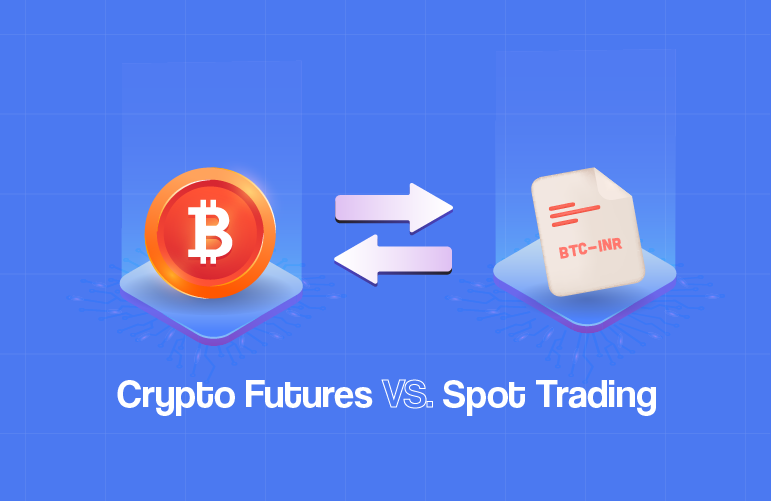Now Reading: Spot vs Futures Trading in Crypto: What Works Better for Everyday Investors
-
01
Spot vs Futures Trading in Crypto: What Works Better for Everyday Investors
Spot vs Futures Trading in Crypto: What Works Better for Everyday Investors

As cryptocurrency becomes more popular among Indian investors, a growing number of people are trying to understand how trading really works. Two common methods—spot trading and futures trading—sound similar but operate very differently. For casual investors, knowing the difference isn’t just technical knowledge; it can determine how safe their money really is.
Spot trading is the simplest way to buy or sell crypto. You pay the current market price, own the digital asset immediately, and can hold or sell it anytime. For example, if Bitcoin is priced at ₹50 lakh and you buy a small fraction, you actually own that amount of Bitcoin in your wallet. This method is transparent, easy to understand, and preferred by beginners who want to learn the market without complex risks.
Futures trading, on the other hand, is more advanced. It allows investors to make predictions about where the price will move without owning the actual crypto. Traders use contracts that agree to buy or sell a specific amount of crypto at a future date for a set price. The appeal lies in the possibility of higher profits—even when prices fall. But with that potential comes serious risk.
The biggest difference between spot and futures trading is ownership and leverage. In spot trading, you use your own money and hold real assets. In futures, you borrow funds to increase your position, which means you can gain more—but also lose more. If the market moves against you, even slightly, losses can multiply quickly. For small-town or casual investors who are new to crypto, this can be financially dangerous.
Spot trading also offers psychological comfort. Since you actually own what you buy, the only real worry is price fluctuation. You can choose to hold your coins for months or years and wait for recovery. Futures trading, however, requires constant attention, deep market knowledge, and emotional control. Even experienced traders can struggle to manage it during volatile periods.
In Tier-2 cities, where many new investors are exploring crypto through small amounts, spot trading is emerging as the safer route. It helps them understand how prices move, how exchanges work, and how to store assets securely. Many local investors use spot trading as a form of digital savings, treating it like gold or stocks rather than a quick-profit game.
That said, futures trading does have its place. For those who understand technical analysis and risk management, it can be a useful tool to hedge or diversify strategies. The key is awareness—knowing that high returns always come with high risk. Jumping into futures without experience is like driving a sports car without learning to steer.
Overall, spot trading remains the better choice for casual investors who want to learn steadily and avoid unnecessary risks. It’s simpler, safer, and easier to manage. Futures trading should only come into the picture once someone has gained enough market knowledge and discipline. In crypto, patience often pays more than speed, especially for those building their first steps in digital investing.

























